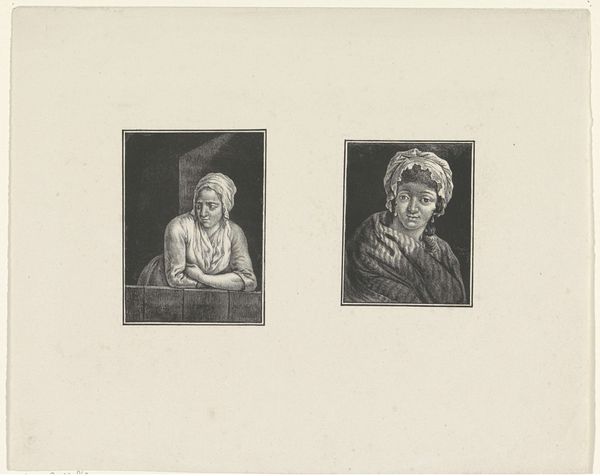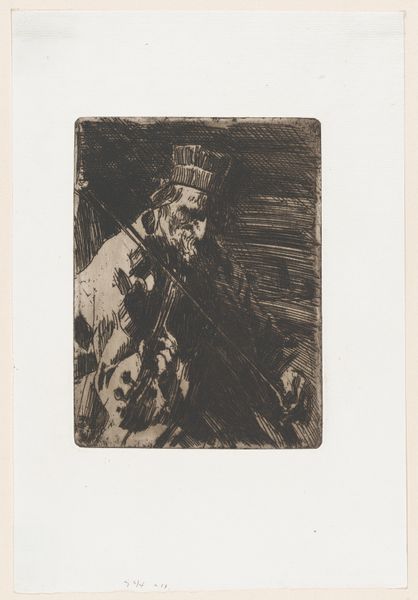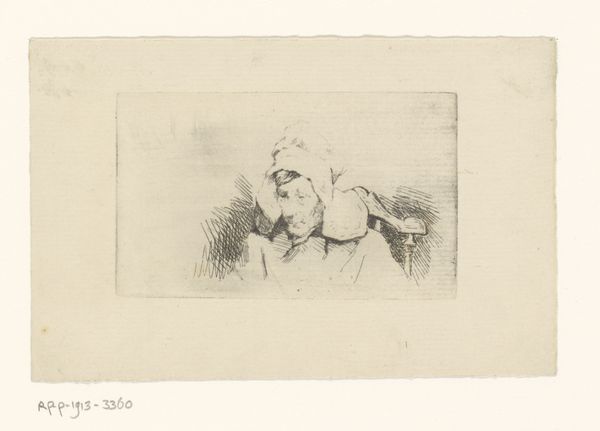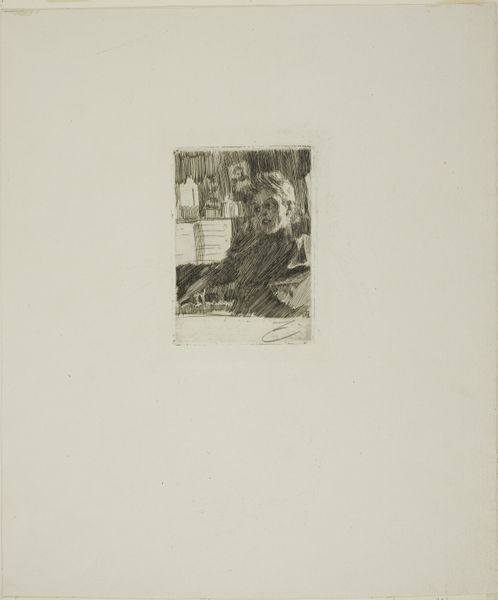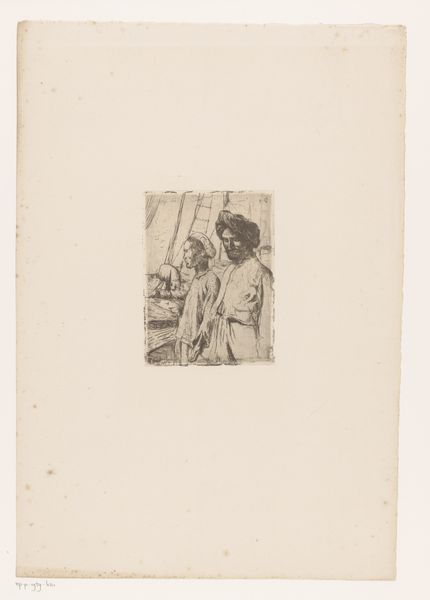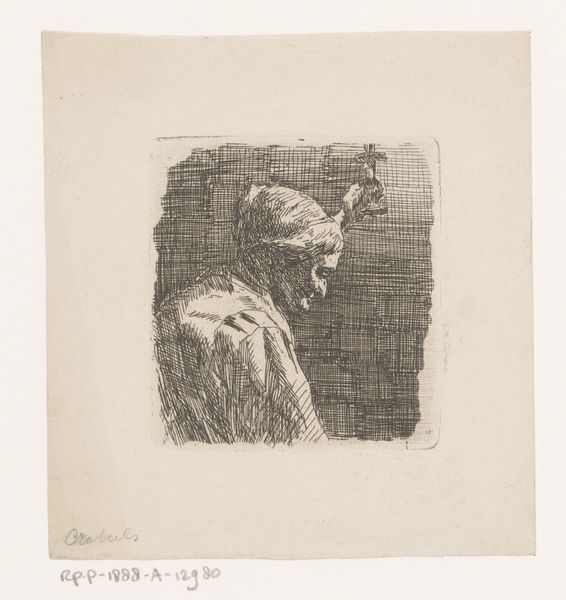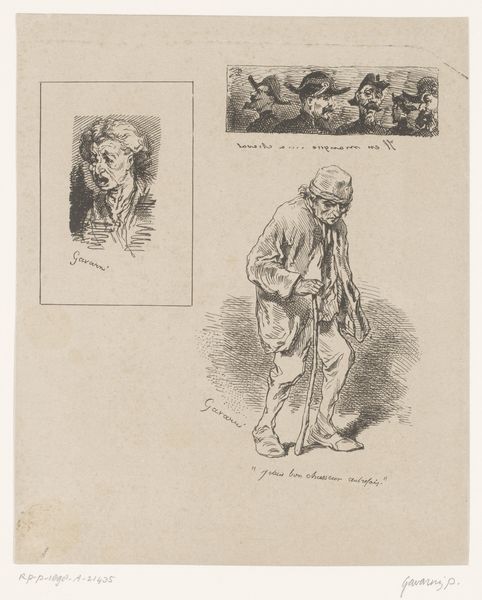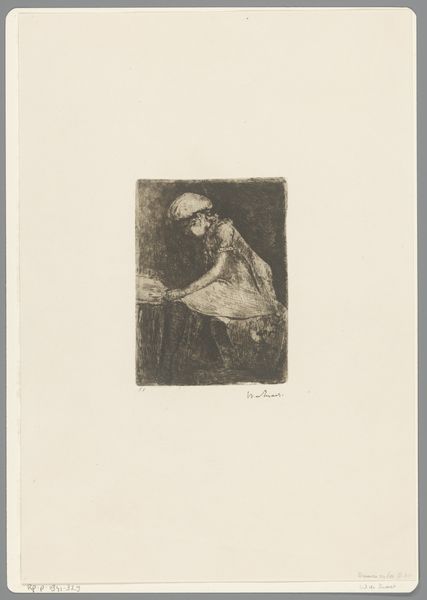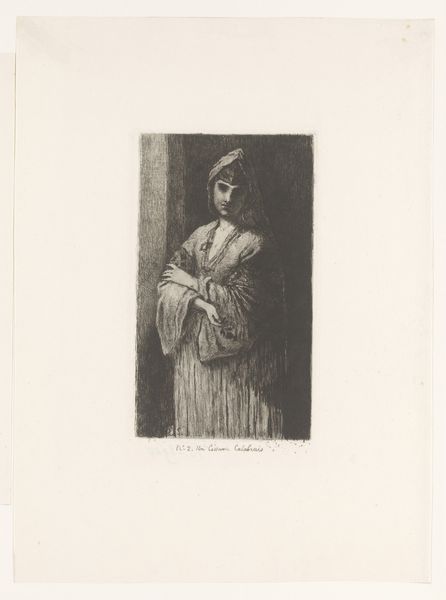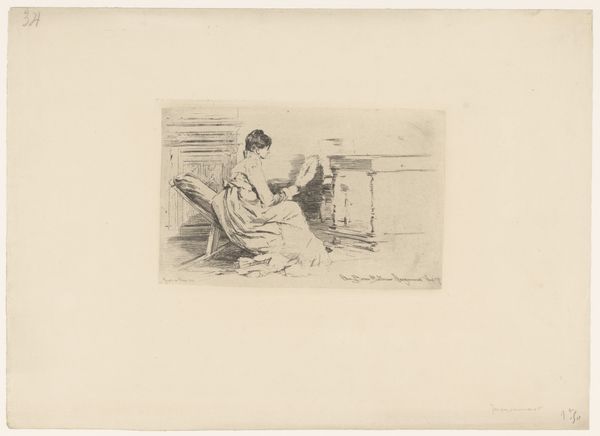
drawing, print, etching
#
portrait
#
pencil drawn
#
drawing
# print
#
etching
#
pencil drawing
#
orientalism
#
genre-painting
#
realism
Dimensions: height 160 mm, width 123 mm, height 160 mm, width 121 mm
Copyright: Rijks Museum: Open Domain
Curator: This is Norbert Goeneutte’s “Zittende jonge vrouw en gewapende man met tulband,” dating from around 1874, at the Rijksmuseum. The artist worked with etching to create this print. What are your initial thoughts? Editor: It feels quite stark. The use of etching is very economical; it conveys a great deal with a minimal approach. And I'm drawn to the contrast, literally, between the sedentary woman and the man armed, ready for something entirely other. Curator: It's interesting to consider the context of Orientalism at this time. Goeneutte, though associated with Realism, seems to be engaging with prevalent interests in North Africa, which was impacting the social gaze throughout Europe. How do you see that shaping his work here, especially in terms of materiality? Editor: Absolutely. Consider how this print medium—accessible, reproducible—becomes a means to mass consumption of the “exotic.” The materials themselves facilitate this spread, turning faraway places into domestic visual fodder. Curator: I agree, there is an aspect of accessibility to this art making that changes the field—perhaps an implicit statement on labor of creating paintings at this time as well. But can the use of etching be viewed as just economical when considering Goeneutte’s influences like photography at this period? Editor: Certainly the photographic plays a part too in how these etched lines stand in to construct realistic renderings. Curator: Do you think the choice of rendering through print alters the perceived power dynamic presented in the image, between the seated woman and the armed man? Editor: Yes, the starkness amplifies the tension. The fact it is a drawing makes the images vulnerable, without the shield of ‘fine art’ which then allows a sharper engagement with the subjects portrayed. Curator: It offers a certain rawness. Well, this exploration has certainly changed my perception of Goeneutte's work. Editor: Agreed, considering how accessible the materials become—especially in this socio-political period—sharpens how we think about these prints.
Comments
No comments
Be the first to comment and join the conversation on the ultimate creative platform.


